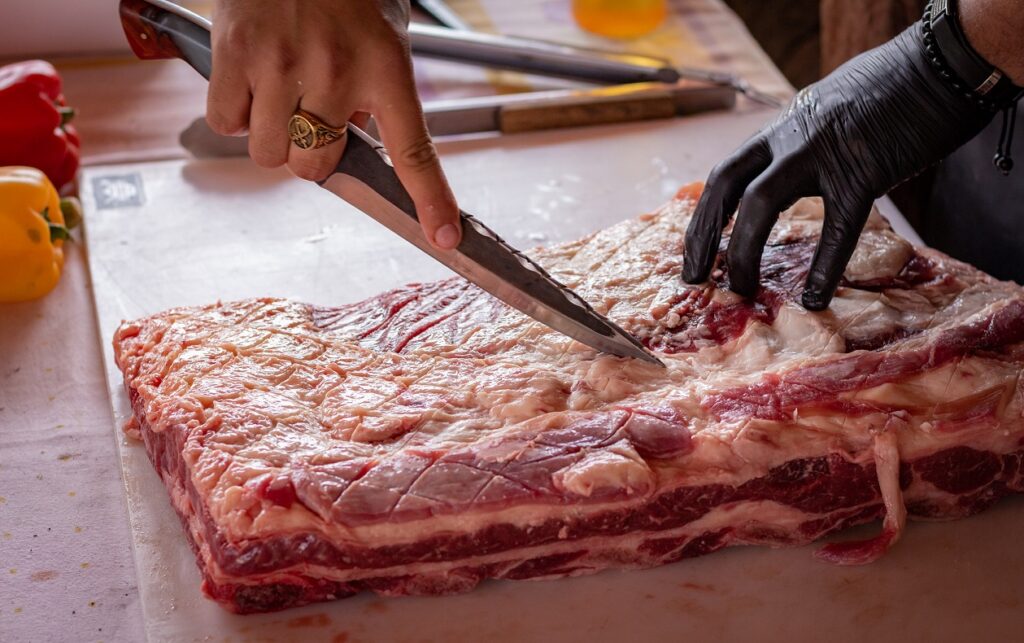The 5 Basic Rules for Cooking Meat
Cooking meat to perfection requires skill, knowledge, and attention to detail. Whether you’re a seasoned chef or a beginner in the kitchen, mastering the art of cooking meat can be a rewarding and delicious endeavor. To help you achieve succulent, flavorful results every time, here are the five basic rules for cooking meat that will elevate your culinary skills and impress your guests.
Choose the Right Cut:
The first rule of cooking meat is to choose the right cut for your desired outcome. Different cuts have varying levels of tenderness, flavor, and ideal cooking methods. For example, tender cuts like tenderloin or ribeye are best suited for quick cooking methods such as grilling or pan-searing. Tougher cuts like chuck or brisket require longer cooking times using methods like braising or slow roasting to break down the connective tissues and achieve tender results. Research the characteristics of different cuts, consider your cooking method, and select the appropriate cut for your recipe.
Proper Seasoning:
Seasoning is a vital step in enhancing the flavor of meat. Before cooking, ensure that your meat is properly seasoned with salt and pepper or a blend of spices and herbs. Seasoning not only adds taste but also helps to form a delicious crust and improve the overall texture of the meat. Allow the seasoned meat to sit at room temperature for about 15-30 minutes before cooking to ensure even cooking and better flavor absorption.
Preheat and Rest:
Proper temperature control is essential for cooking meat to perfection. Preheat your cooking surface, whether it’s a grill, pan, or oven, to the desired temperature before adding the meat. This helps to sear the meat, lock in juices, and create a flavorful outer crust. Additionally, after cooking, allow the meat to rest for a few minutes before slicing or serving. Resting allows the juices to redistribute, resulting in a juicier and more tender final product. Cover the meat loosely with foil during resting to retain heat and prevent it from cooling too quickly.
Use a Meat Thermometer:
Cooking meat to the correct internal temperature is crucial for food safety and achieving desired doneness. Use a reliable meat thermometer to accurately measure the internal temperature of the meat. This is especially important for larger cuts or poultry, where undercooking can lead to foodborne illnesses. Refer to a temperature guide for the specific type of meat you are cooking to determine the appropriate internal temperature for rare, medium, or well-done results. Avoid relying solely on visual cues as they can be misleading.
Allow for Carryover Cooking:
Carryover cooking is the phenomenon where the internal temperature of meat continues to rise even after removing it from the heat source. This is due to residual heat trapped within the meat. To account for carryover cooking, remove the meat from the heat source a few degrees below the desired final temperature. Cover the meat and let it rest, during which the internal temperature will continue to rise to reach the desired doneness. Keep this in mind when using a meat thermometer to prevent overcooking and ensure perfectly cooked meat.
Cooking meat to perfection requires adherence to a few basic rules. By choosing the right cut, properly seasoning the meat, preheating and resting, using a meat thermometer, and accounting for carryover cooking, you can achieve delicious, succulent meat dishes every time. Remember to experiment with flavors, techniques, and different cuts to discover your own signature dishes. With practice, attention to detail, and a passion for cooking, you’ll become a master of meat, impressing your family and friends with delectable meals that showcase your culinary skills.
